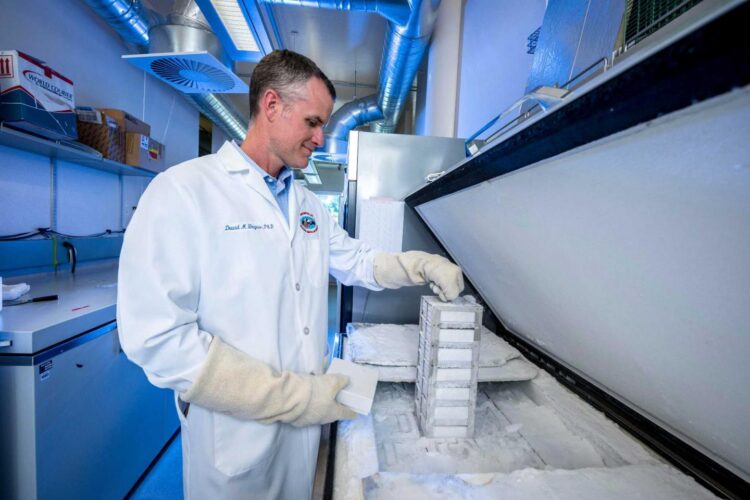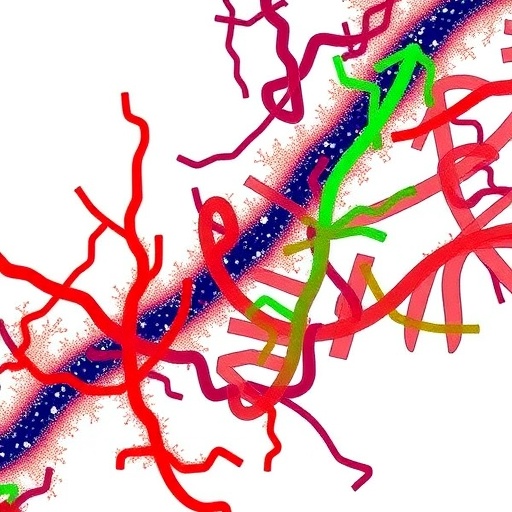Study solves a long-term mystery, providing a plausible explanation for how Francisella tularensis can overwinter in the environment outside of a host
Although it is not spread through human contact, Francisella tularensis is one of the most infectious pathogenic bacteria known to science–so virulent, in fact, that it is considered a serious potential bioterrorist threat. It is thought that humans can contract respiratory tularemia, or rabbit fever–a rare and deadly disease–by inhaling as few as 10 airborne organisms.
Northern Arizona University professor David Wagner, director of the Pathogen and Microbiome Institute’s (PMI) Biodefense and Disease Ecology Center, began a three-year project in 2018 to better understand the life cycle and behavior of F. tularensis, funded through a $2.25 million grant from the U.S. Defense Threat Reduction Agency (DTRA).
Now, Wagner and his collaborators have published their findings, “Long-Term Survival of Virulent Tularemia Pathogens outside a Host in Conditions That Mimic Natural Aquatic Environments,” in the journal Applied and Environmental Microbiology. In the paper, the team shows how they were able to prove, by replicating environmental conditions in the lab, including low temperatures and low-nutrient water, that the bacterium can persist for months in cold water without any nutrients and remain fully virulent. Their results provide a plausible explanation for how it can overwinter in the environment outside of a host.
“We are making some very interesting discoveries in this project,” Wagner said. “The main finding is that Francisella tularensis can persist in a dormant state for more than six months in cold water without any nutrients. This means it has the ability to persist in the environment outside of a mammalian host or arthropod vector. This was unexpected because many other bacteria that persist like that long-term in the environment form spores when they are outside of a host, such as Bacillus anthracis, the bacterium that causes anthrax forms spores, but F. tularensis doesn’t do that. Others, like Yersinia pestis – the bacterium that causes plague – are always either in a mammalian host or a flea vector. F. tularensis has the ability to persist long-term in the environment long-term outside of a host without forming spores while remaining fully virulent.”
“These study results have completely changed our perspective on the ecology of this bacterium. We now understand that mammals are likely just a small (but still important) aspect of its survival strategy. We now think that it spends most of its time in the environment outside of a host and only periodically causes disease in mammals. But those disease events in mammals are still very important as they serve to amplify the amount of F. tularensis that is deposited back in the environment.”
Working with co-principal investigator Jason Sahl, associate professor and assistant director of PMI, and with PMI senior research scientists Dawn Birdsell and Joe Busch, Wagner conducted the study along with colleagues at two of the team’s long-term collaborating institutions in Sweden: The Swedish Defence Research Agency and Umeå University.
Along with their Swedish collaborators, Wagner and his team are known worldwide for their work developing the phylogeny, or global family tree, of F. tularensis and its phylogeography–mapping where different groups of the species are found throughout the world and understanding the species’ genetic diversity.
“As we continue with the DTRA research grant, we are now investigating the genes and proteins that regulate the ability of F. tularensis to persist in the environment outside of mammals and hosts. This work involves a number of current and recently graduated undergraduate students at NAU: former student Kathleen Soria, current students Natalie Hart and Rebecca Ballard, and current student and Flinn Scholar Kailee Savage.
Although the bacteria are naturally occurring throughout the northern hemisphere, including Arizona, the number of reported cases in the U.S. is small, with only 230 cases in 2016, three of which occurred in Arizona. Humans can be infected through insect bites; by drinking contaminated water, which happens in developing countries such as Turkey; by handling infected animals; and by breathing aerosolized particles containing the bacteria. Humans cannot transmit the disease to other humans. There is no vaccine to prevent the disease, which is treated with antibiotics. Wagner’s team recently completed a related project funded by the DTRA studying the pathogen’s antibiotic resistance.
###
About Northern Arizona University
Northern Arizona University is a higher-research institution providing exceptional educational opportunities in Arizona and beyond. NAU delivers a student-centered experience to its nearly 30,000 students in Flagstaff, statewide and online through rigorous academic programs in a supportive, inclusive and diverse environment. Dedicated, world-renowned faculty help ensure students achieve academic excellence, experience personal growth, have meaningful research opportunities and are positioned for personal and professional success.
Media Contact
David Wagner
[email protected]
Related Journal Article
http://dx.





